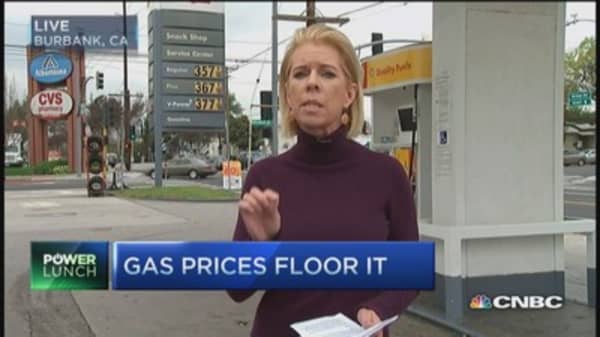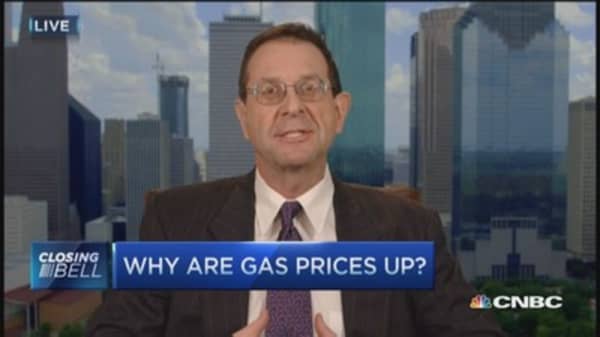It looks like the steep slide in gasoline prices is over, at least for now.
The sharp drop in crude prices since last summer has brought down the prices of gasoline across the country, saving consumers billions of dollars when they fill up at the pump. Last month, gas prices fell to their lowest level in five years, to a national average of $2.03 a gallon, according to AAA.
The drop helped drag the government's consumer price index deep into negative territory—down 0.7 percent in January, the biggest drop since December 2008, the Labor Department said Thursday. Cheaper gasoline helped offset price increases for other goods and services from rent to restaurant meals. After factoring out volatile food and energy prices, the so-called "core" consumer inflation rate rose 0.2 percent, still tame by historical standards.
Read More Consumer prices plunge on cheaper gas costs
But the impact of lower pump prices has apparently run its course. Crude prices have stabilized and pump prices have even bumped up a bit in many parts of the country. The uptick comes as refiners cope with isolated production bottlenecks and a monthlong strike by refinery workers.





